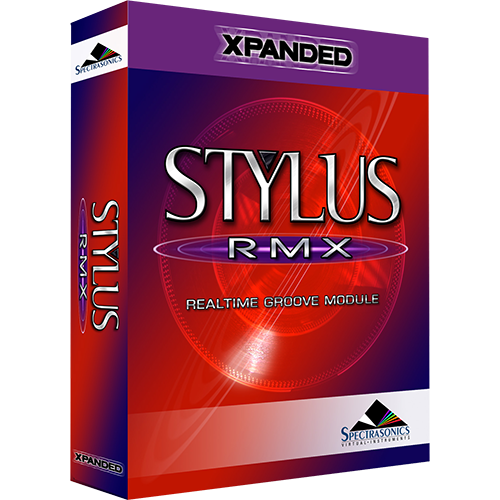
The FX Page offers access to the powerful signal processing capabilities of SAGE to customize and shape the sounds inside Stylus RMX.
Watch the FX Architecture video tutorial for more information.
FX UNITS
The internal RMX FX Units are effect plug-ins inside Stylus RMX.
There are currently 33 different professional quality internal FX Units to choose from:
- Tube Limiter
- Tape Slammer
- Modern Compressor
- Vintage Compressor
- Gate Expander
- Imager
- Vintage 2-band EQ
- Vintage 3-Band EQ
- Graphic 7-Band EQ
- Graphic 12-Band EQ
- Parametric 2-Band EQ
- Parametric 3-band EQ
- Wah-Wah
- Power Filter
- Formant Filter
- Valve Radio
- Smoke Amp Simulator
- Flame Distortion
- Ultra Chorus
- Retro-Phaser
- PRO-Phaser
- EZ-Phaser
- Retro-Flanger
- Flanger
- Chorus Echo
- BPM Delay
- BPM Delay X2
- BPM Delay X3
- Retroplex
- Radio Delay
- Spring Verb
- PRO-Verb
- EZ-Verb
Number of Simultaneous FX
Depending on your computer, it’s possible to have a huge number of simultaneous FX Units active in one instance of Stylus RMX.
Any of the FX Units can be loaded into one of the three slots in an RMX FX Rack—up to 133 FX Racks—meaning a maximum of 399 FX Units can be open at once.
However this is an unlikely scenario!
FX / Rack Structure
- 1 Insert FX Rack per Edit Group x 16 maximum Edit Groups per Part x 8 Parts = 128 Racks.
- 4 Aux FX Racks and 1 Mastering Rack = 5 Racks.
- Total 133 Racks x 3 FX slots per Rack = 399 maximum simultaneous FX Units.
NOTES ON USING THE FX
- Each FX Unit consumes various amounts of CPU power, so the number of simultaneous FX Units depends of the CPU power available in your computer.
- Some FX Units have two pages. The second page parameters can be reached by clicking the arrow on the right side of the plug-in. Usually, it’s labeled “MORE” or lists the type of parameters found on the second page.
- You can use external third-party FX plug-ins with Stylus RMX by utilizing the multiple outputs feature of Stylus RMX with your host. Check out the Using Separate Outputs video for more information.
- Although RMX doesn’t process external audio inputs, you can still use the RMX FX on your own audio by creating a REX file of the desired audio and importing it into RMX using the REX File Import feature in the Standalone. Once inside RMX, you can manipulate the audio just as you would any other sound in RMX.
Watch the Using Your Own Audio video tutorial for a demo of this technique.



